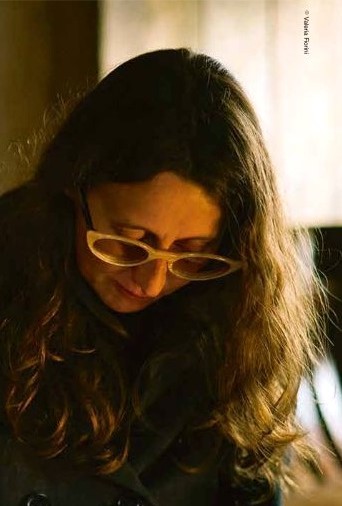Argentina, Film, 2020
Lucrecia
Martel

Each of Lucrecia Martel’s films is an event. They are mysterious works, filmed in utmost secrecy (she is notorious for being secretive), which often raises expectations. But the films one expects are never situated where the spectator expects them to be (not even for the most diehard Martel cineaste). This is one of the qualities that makes her unique as a filmmaker: her style is as distinct as the varying worlds that her works inhabit, yet each film is surprising, audacious, and challenging in new ways, making both the viewer’s experience as well as the director’s aesthetic trajectory into something rarified.
After a promising short film, Rey muerto (Dead King, 1995), a Western take on the oppressive milieu in the provinces which will become one of her trademarks, Martel made her feature-length debut with La ciénaga (The Swamp, 2001), undoubtedly the most powerful, complete, and influential debut of the so-called New Argentine Cinema. Martel was taking her initial steps and already seemed to know everything. What she filmed was without parallel. A truly programmatic film, La ciénaga established the horizon in which all her films would appear: La niña santa (The Holy Girl, 2004), La mujer sin cabeza (The Headless Woman, 2008), Zama (2017). A handful of films—four features in twenty years—all them original, exhilarating, remarkably unsettling.
La ciénaga is Salta, the city in northern Argentina where Martel was born, with its bourgeoisie in decline, its wounded families, and its sticky, alienating summers—the perfect breeding ground for this web of little tales, gossip, grudges, and beliefs that Martel’s camera knows how to capture like no other. All of Martel is there, but first and foremost is her fascination with the local manners of speaking and interacting, the plainly rooted rituals, protocols, and typical ways of life, laid bare by Martel with an entomologist’s precision and resounding through the echo chamber of contemporary society.
The singularity of her “provincial cosmopolitanism” is apparent, an ability to completely articulate the eyes and ears with which she captures the seismic shifts of her land —discreet, silent, ever menacing—along with the most critical debates on the global agenda. Also evident is her affinity for movement, mixing, the dealings of the classes, genres, ages, and species, which renders each of her shots into a kind of theater of unique wantonness both fluid and explosive. Contravening the rigid hierarchies of an archaic society, in Martel everything comes up against each other: class with gender, desire with power, lineage with sexuality, reason with madness, nature with nurture. In La niña santa, desire and the sacred are neighbors in too close a proximity, perhaps two sides of the same vertiginous face; in La mujer sin cabeza, respectability rubs shoulders with guilt and criminal acts; in Zama (Martel’s first foray into “period” cinema), history is hallucinatory, pure lysergia: a bleak expanse in which a colonial official waits and bleeds out his days among dogs, women, foreigners, horses, Blacks, Indians. There are no borders in Martel, or they exist only as unstable, porous strips, divulging far more than they divide. Lucrecia Martel’s cinema is a laboratory of divergent coexistence.
Aufgrund der Corona-Pandemie konnte Lucrecia Martel ihr Stipendium in Berlin nicht antreten.
Text: Alan Pauls
Translation: Kathleen Heil
1995: Rey Muerto
(Short film)
2001: La ciénaga
(Feature Film)
2004: La niña santa
(Feature Film)
2008: La mujer sin cabeza
(Feature Film)
2017: Zama
(Feature Film)
2019: AI
(Short film)

